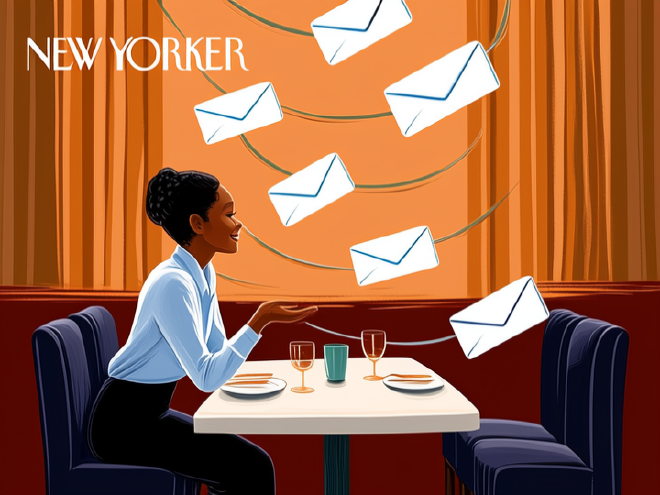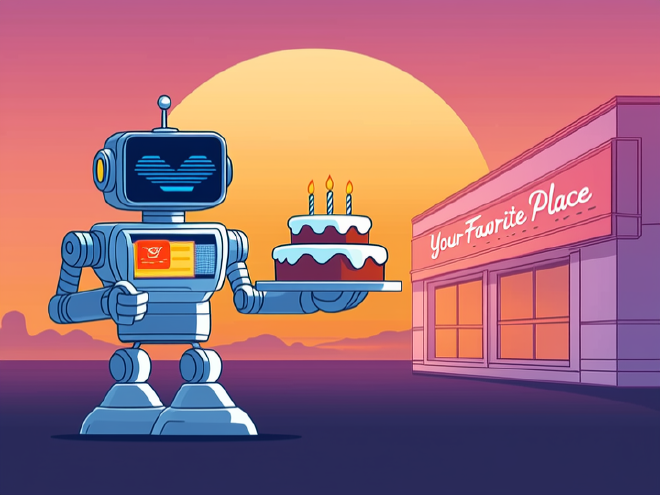How the Restaurant Industry Can Use Email to Enhance Brand Loyalty
Table of Contents
How the Restaurant Industry Can Use Email to Boost Brand Loyalty #
In the highly competitive restaurant industry, while attracting new customers is important, the key factor determining a brand’s long-term success lies in how existing customers are retained and brand loyalty is enhanced. Research shows that repeat customers typically spend more than 60% more than new customers, and email marketing is an effective tool for achieving customer retention and increasing brand loyalty.
This article will explore how restaurants can leverage precise, personalized, and continuous email marketing strategies to build stable customer relationships, improve repeat purchase rates, and establish brand recognition and trust in the minds of their customers.
Why Is Email Marketing Crucial for the Restaurant Industry? #

In the digital marketing era, while social media, short videos, and food delivery platforms can drive traffic, they often lack “controllability” and “private domain.” Email marketing, on the other hand, is a marketing channel that allows precise targeting and repeated use, offering the following advantages:
- Low Cost, High Return: For every $1 invested in email marketing, an average return of 3,800% can be achieved.
- Direct User Reach: Emails bypass algorithmic restrictions and directly enter users’ inboxes.
- Easy Personalization: Customized email content based on user behavior can increase open and conversion rates.
- Enhanced Brand Recall: Regular communication with customers helps strengthen brand awareness.
Email Marketing Strategies for Restaurants to Enhance Brand Loyalty #
To truly enhance customer loyalty through email marketing, restaurants need to develop a systematic, data-driven, and emotionally engaging email strategy. Here are several key strategies:
1. Build a High-Quality Email Subscription List #
Without a precise user list, even the best content cannot deliver value.
- Set up subscription entry points in stores, on websites, and on social media, such as “Subscribe Now to Receive Coupons” or “Subscribe for Birthday Discounts.”
- Acquire customer emails through partnerships with food delivery platforms (within the bounds of privacy policies).
- Integrate customer information through membership systems to ensure more targeted email content.
Tip: Offering instant rewards is an effective way to increase subscription rates. For example, give a 10 yuan coupon upon first-time subscription.
2. Personalized Content Marketing: Make Customers Feel Valued #
Modern consumers are increasingly resistant to “one-size-fits-all” advertising content. Personalized emails have a 26% higher open rate and click-through rate compared to regular emails.
- Recommend dishes based on customer purchase history, such as “Your last order of XX set meal has been upgraded.”
- Send exclusive birthday and holiday greetings and offers, such as “Birthday Special Menu + Free Dessert.”
- Set up email content modules according to customer preferences, such as vegetarian recommendations for vegetarian customers and discount coupons for frequent delivery users.
Case Study: Starbucks successfully increased customer repurchase rates by over 30% by recommending drinks through personalized emails.
3. Establish Regular Communication Mechanisms: Keep the Brand Active #
Customers won’t remember a brand that only appears during promotions. Establishing regular communication mechanisms helps enhance brand intimacy.
- Send weekly/monthly brand updates, including new product recommendations, chef stories, and restaurant events.
- Create an “Exclusive Member Email Channel” accessible only to subscribers, offering exclusive content.
- Send customized emails on holidays or special occasions, such as Mother’s Day, Father’s Day, or Valentine’s Day.
Suggested Frequency: Weekly themed emails + monthly brand update emails + holiday/birthday emails
4. Leverage Automated Email Flows to Improve Efficiency and Precision #
Automated emails not only save manpower but also enable precise customer engagement at critical moments.
- Welcome emails for new subscribers: Introduce brand philosophy and offer coupons.
- Birthday emails: Automatically send greetings and discount coupons.
- Cart abandonment reminders: Target customers who haven’t completed online orders.
- Customer churn warning emails: Send recall emails to customers who haven’t placed an order for over 30 days, saying “We Miss You.”
Tool Recommendations: Platforms like Mailchimp, Klaviyo, and Brevo support highly customized automated email flows.
5. Build Membership Systems and Loyalty Programs Through Emails #
Emails are a natural medium for communicating membership programs. By using emails to convey membership tiers, point rules, and exclusive benefits, customer stickiness can be enhanced.
- Regularly send notifications about accumulated points: “You’ve accumulated 200 points, redeemable for a latte.”
- Promote member-exclusive activities: “Silver members enjoy a 10% discount, Gold members enjoy an 8% discount.”
- Implement a “Points + Consumption” combined incentive mechanism to encourage continued customer spending.
Data Support: Brands with point systems have twice the customer retention rate compared to those without.
Key Elements for Enhancing Brand Loyalty #
When implementing email marketing strategies, restaurants should also pay attention to the following key elements:
✅ Emotional Connection: Build a “Warm” Brand #
- Include brand stories, employee interviews, and customer reviews in emails to make customers feel the “humanity” of the brand.
- Use friendly tones and visual designs to enhance the reading experience.
✅ Data-Driven Approach: Let Data Speak, Continuously Optimize #
- Track key metrics such as email open rates, click-through rates, and conversion rates.
- Conduct A/B testing on different email subjects, content structures, and sending times to identify the optimal approach.
✅ Compliant Operations: Respect User Privacy, Enhance Trust #
- Comply with the “Personal Information Protection Law” and the “Anti-Spam Law,” providing unsubscribe options.
- Clearly inform users about subscription content and frequency to avoid unwanted subscriptions.
Conclusion: Email Marketing Is the “Hidden Gold Mine” for Building Restaurant Brand Loyalty #
In this era of expensive traffic and scarce user attention, email marketing is not only a low-cost, high-return marketing method but also an essential tool for building brand loyalty and enhancing customer lifetime value.
Through precise customer segmentation, personalized email content, continuous emotional communication, and automated processes, restaurants can truly achieve a customer-centric marketing transformation, creating a group of “loyal fans” and laying a solid foundation for long-term brand development.
Call to Action: Start optimizing your email marketing strategy now! Whether it’s updating subscription entry points, designing personalized content, or introducing automated processes, each step can contribute to enhancing brand loyalty.
Explore More Restaurant Marketing Strategies, Click to Learn More About Brand Building Content.
